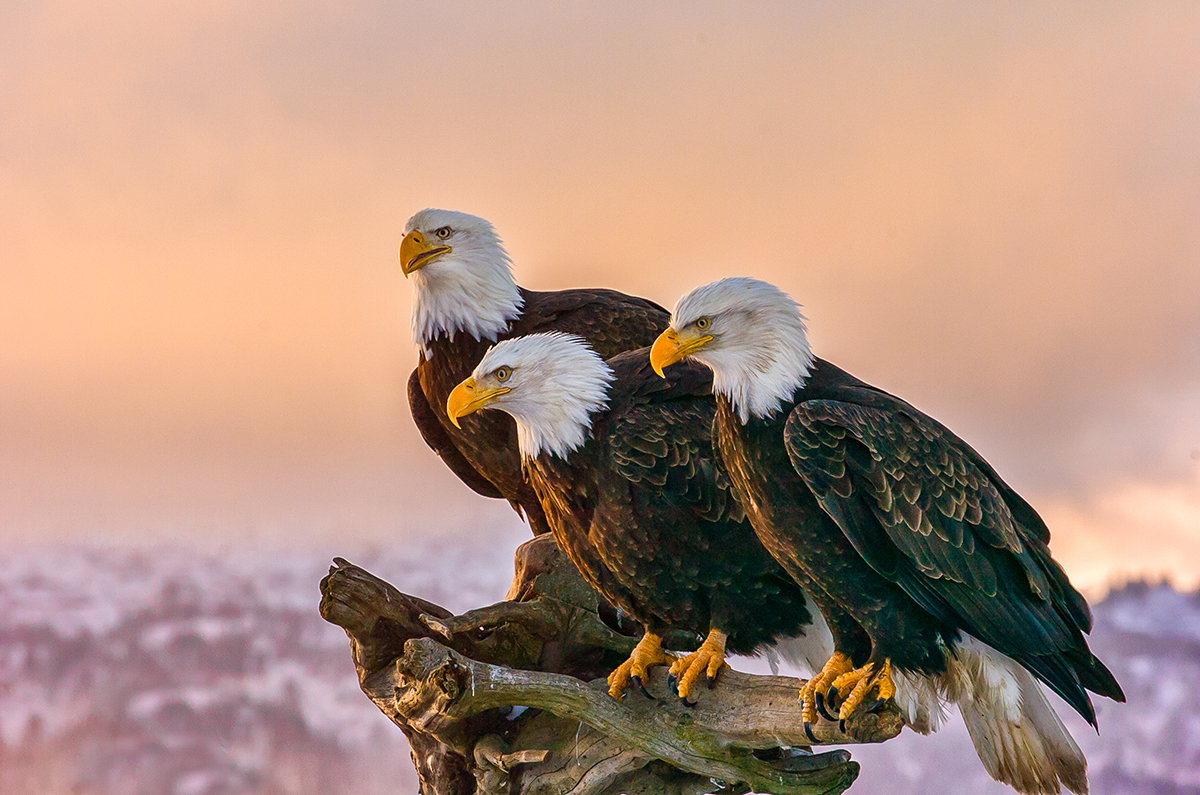A winter wonderland of Alaska wildlife

Alaska is home to hundreds of different wildlife species. Whether you’re a local or a world traveler, a glimpse of a wild animal in its natural habitat never gets old.
With clearer vegetation, winter is a prime time for spotting wildlife. So, get yourself bundled up, grab that camera and get outside because we have your guide to seeking out some of Alaska’s wildlife this winter.
Bald eagle
The Chilkat River near Haines boasts the largest bald eagle concentration in the world. These big birds can be seen year-round as the cold winters don’t faze them. If you see one perched in a tree, it’s a sign that they may be hungry and on the lookout for something tasty to eat, like fish or a leftover animal carcass.
Dall sheep
Dall sheep and rams can be seen roaming around on rocky slopes and cliffs. Known for their curled horns, Dall sheep can also be seen year-round in areas like the Kenai Mountains, Tok and the Chugach Mountains. This time of the year, they’re living off of dry, frozen grass and sedge stems.
Bison
Hoping for a close-up? Head over to the Delta Junction Bison Range where you can easily spot and photograph bison in the area. Wood bison don’t mind the cold because once the temperature drops, their winter coats grow in. Then by early spring, the dense fur will begin to shed.
Northern flying squirrels
These cute little critters can be seen swooping in on bird feeders across Interior Alaska. If you’re a night owl or an early bird, you’re in luck! Flying squirrels are strictly nocturnal and only active for a couple of hours after sunset and then again for a couple of hours before sunrise.
Depending on when the temperature drops, these squirrels move out of their tree cavities and into brooms, clumps of abnormal tree branches caused by tree rust disease. During the coldest point of the winter, the squirrels will huddle together for warmth and hibernate.
Caribou
If you’re driving along the Parks Highway near Healy, keep an eye out for caribou. Many herds can be spotted in the area as they retreat to the boreal forest during the winter months. Their winter diet includes mushrooms, willow leaves and dried sedges.
Arctic fox
Arctic foxes can be found in the treeless tundra extending through the Arctic regions of Alaska. When the season changes, so does its coat. Going from either a gray or brown coat, the fur turns white to blend in with its winter-like surroundings, so you’ll need to keep your eyes peeled to spot one. During this time, they eat berries, eggs and scavenged remains of other animals.
Moose
You don’t have to go too far to see a moose. These creatures frequent lowland areas and can be seen strolling through town in most parts of Alaska. Ranging between 800 and 1,600 pounds, moose consume large quantities of willow, birch and aspen twigs in the winter. During seasonal movements, they can travel up to 60 miles.
When venturing out to see what wildlife the Great Land has to offer, make sure you’re dressed properly for weather and have a safety plan in place. Alaska is a winter wonderland of wild animals, but they are wild so keep your distance. Brush up on these wildlife viewing tips from the Alaska Department of Fish and Game.
Back to Blog